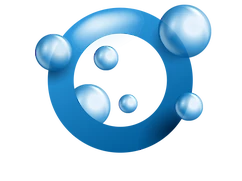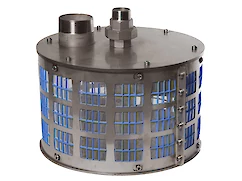ISO TC281
ISO TC281 is the International Organization for Standardization’s Technical Committee dedicated to fine bubble technology, establishing global standards for terminology, measurement, and industrial applications of fine bubbles and nanobubbles. This committee’s work provides the crucial “common language” for manufacturers, researchers, and industries using fine and ultrafine bubble generators, from water treatment to agriculture, medical imaging, and drug delivery
What is ISO TC281?
Established in 2013, ISO TC281 leads the global effort to standardize artificially manufactured fine bubbles—gas bubbles typically under 100 micrometres in size, dispersed in liquids. Its scope includes the fundamental principles, terminology, scientific characterizations, and wide-ranging industrial applications of fine bubble technologies.
Why Standardization Matters
Unified measurement and definition standards allow for reliable quality, performance comparisons, and international collaboration. For instance, they specify how to measure bubble size, density, type of gases, and lifetimes in liquid, underpinning market growth and innovation in everything from hydroponics to advanced cleaning and water sanitation. With standardized terminology and validated test methods (such as those described in ISO 20480-1 and ISO 20304-1), customers and regulators can trust claims made by manufacturers of fine bubble equipment.
Committee Structure and Global Impact
ISO TC281 uses a three-tier standardization structure:
- Top Layer: General principles, terms, and definitions.
- Middle Layer: Measurement methodologies, particle properties.
- Bottom Layer: Specific industrial applications.
The committee regularly updates standards and convenes meetings of experts from Japan, China, Southeast Asia, Europe, and other regions. Its deliverables already support global initiatives like clean water, sustainable agriculture, and climate action by offering reliable tools to organizations, governments, and industries building fine bubble systems.
Takeaway
ISO TC281 delivers the technical backbone for the safe, reliable, and productive use of fine and nanobubble technology worldwide, helping both established companies and emerging markets contribute to innovation and sustainability. Acniti remains at the forefront, ensuring its solutions align with international standards that drive global progress in water quality, food safety, and smart resource management.
پیوندها
4 پیوند به صفحات دیگر: ISO TC281
چیزهای بزرگ زمانی اتفاق میافتد که دنیا موافقت کند، حبابهای خوب یک فناوری نوآورانه هستند، اما بدون استانداردهای مناسب برای توسعه صنعت، موانعی وجود دارد. از سال 2013 ISO شروع به ایجاد یک استاندارد بین المللی برای حباب های ریز کرد که عموماً به عنوان حباب نانو شناخته می شود.
استاندارد ISO TC281 برای حبابهای فوقریز، افزایش اکسیژن آب و رشد گیاه با فناوری Acniti را تعیین میکند.
دوست دارید بدانید چرا نانوحباب ها رسما حباب های بسیار ریز نامیده می شوند؟ در این مقاله دلایل تصمیم کمیته فنی ISO به استفاده از نام رسمی حباب های بسیار ریز به جای حباب های نانو را توضیح می دهیم.
اکسیژن نقش مهمی در تنفس گیاه دارد که باعث تولید انرژی و رشد گیاه می شود. افزایش درصد اکسیژن در آب باعث بهبود ساختار ریشه و فعالیت میکروب های مفید در ریزوسفر می شود. طبیعتاً یک سیستم موثر و کاربردی می تواند با بهبود کیفیت آب آبیاری و افزایش اکسیژن محلول در آب آبیاری، بهره وری را افزایش دهد. اکسیژن ساز آکنیتی و Acniti turbiti O3 مکمل های بسیار موثری برای آبیاری مزارع کشاورزی و در عین حال بهبود کیفیت آب و افزایش اکسیژن محلول (DO) و ازن در آب آبیاری هستند. برای تعیین نقش نانوحبابهای اکسیژن و ازن در رشد کاهو، یک تحقیق تجربی انجام شد. تحقیقات نشان داد که با استفاده از مولدهای نانوحباب آکنیتی، سطح اکسیژن محلول در آب افزایش یافته و باعث رشد بیشتر ریشه کاهو و افزایش وزن آن می شود.







